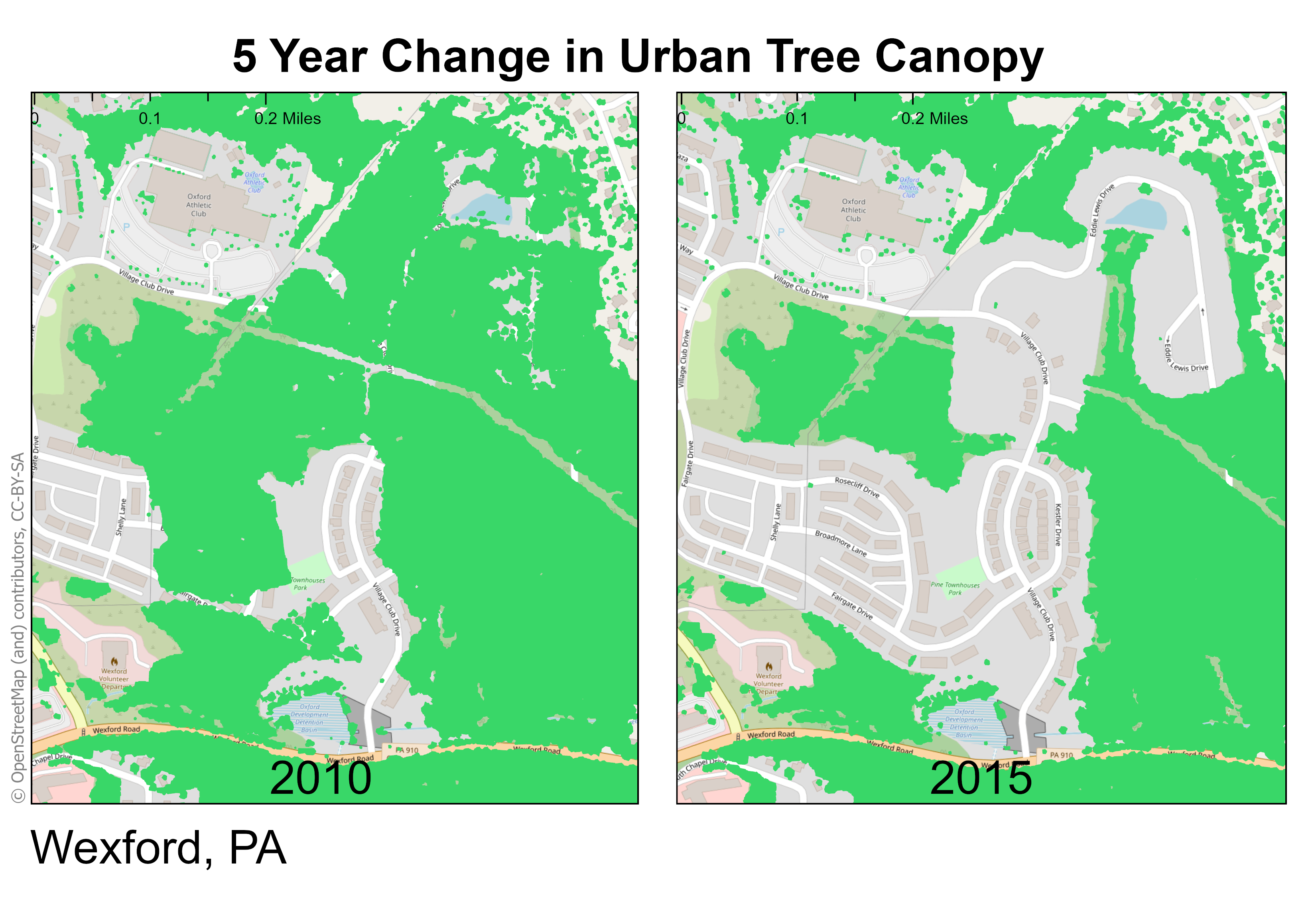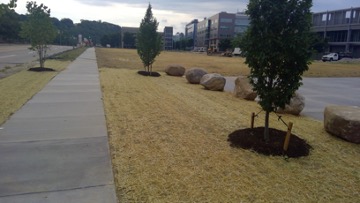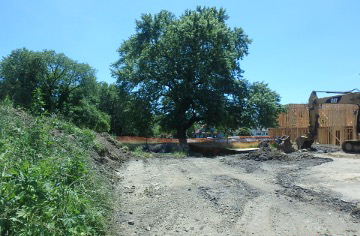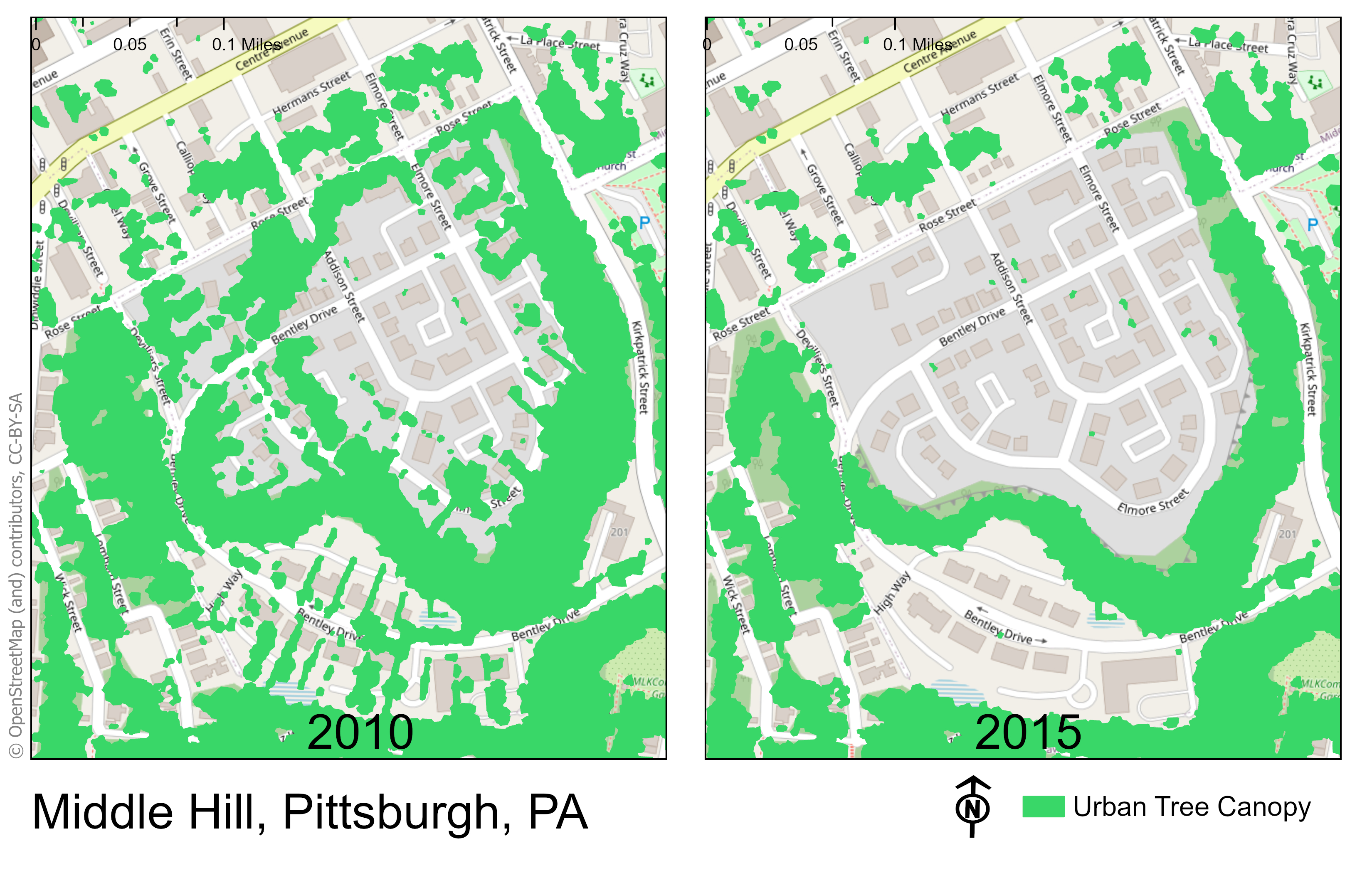Why Protecting Trees Matters and What You Can Do
Tree loss is an issue that affects many. Countless benefits to local communities are thanks to trees. To prevent tree loss from getting out of hand, residents and developers alike can perform sustainable habits to make sure the trees around them have a healthy future.
Tree Canopy Loss in Pittsburgh
In 2014, Pittsburgh was listed by National Geographic as being a top city for urban tree canopy cover. This was based on data from 2010 that 42 percent of the city is covered by its urban tree canopy. From 2010 to 2015, however, the city’s percentage of canopy dropped by three percent due to invasive species and tree rot.
Other factors that can contribute to loss in tree canopy include construction and natural disasters. The loss of trees in Pittsburgh shows how quickly the health of a tree can change.

Benefits of Tree Canopy
If trees are taken care of, they can provide value for a community. Some examples of services include:
- Increasing a property’s value by 3 to 15 percent
- Reducing the need for air conditioning by 30 percent
- Reducing the need for heating by 20 to 50 percent
- Reducing the urban heat island effect
- Improving air and water quality
- Improving mental health
- Providing wildlife habitat
- Producing oxygen
Learn more about the benefits of trees and other green infrastructure.
Trees and Stormwater
Trees can act as a way to absorb and even redirect stormwater. This works to prevent flooding of streets, sidewalks and properties. Their root systems can create extra space in the soil for the water to be absorbed while also stabilizing the ground. The parts of the tree that are above ground, like the leaves and branches, can also absorb rainwater as it falls.Pittsburgh’s tree canopy has been calculated to annually absorb 41.8 million gallons of water with an estimated value of $334,601. This can make trees a vital resource in communities that struggle with managing stormwater.

This project in the City of Pittsburgh planted vegetation to filter the stormwater around the property. Annually, the trees planted for the project soak up around 260,680 gallons of water.
How You Can Help
Homeowners
If you’re interested in tree maintenance, here are a couple of steps to try on your property. Remember to check your local ordinances as permits or inspections may be needed before implementing.- Plant native tree species on your property
- Pick up pet waste to avoid damaging the soil and roots of a tree
- Avoid dumping contaminated water around trees
- Prune branches where needed
Consider joining local efforts and volunteer for a tree planting event. Tree Pittsburgh and Western Pennsylvania Conservancy are working to increase tree canopies and rely on volunteers to create green and healthy regions.
Developers
Construction projects are a great opportunity to preserve the trees already on the site and find ways to plant more. Below are a couple of ways that developers can incorporate trees in their projects:
- Take an inventory of tree species, condition and size
- Monitor and maintain aeration of the soil when using equipment
- Use cribs and paths to prevent working too closely to trees
- Create plans that strategically plant trees near buildings and parking lots
- Plant rain gardens to prevent stormwater issues
- Provide information to the property owners on how to maintain the trees

In a Harrison Township construction project, trees on the property were protected by working around them. Over 20 native trees and three native evergreens were also planted.
References
“Benefits of Trees.” Arbor Day Foundation, https://www.arborday.org/trees/benefits.cfm
Henderson, Kara. “It takes a village to keep trees healthy.” University of Pittsburgh: Pittwire, University of Pittsburgh, 22 October 2021, https://www.pitt.edu/pittwire/features-articles/campus-upgrades-landscape-justice
Morris, Ryan, et al. “Urban Tree Canopy.” National Geographic, 2014, https://www.nationalgeographic.com/news-features/urban-tree-canopy/
Onufer, Molly. “Pittsburgh Selected for Reforestation Hubs Initiative.” The City of Pittsburgh, The City of Pittsburgh, 4 January 2021, https://pittsburghpa.gov/press-releases/press-releases/4589
PITTSBURGH, PA., ORDINANCES ch. 483, § 1-4 (2004), ch. 485, § 1-7 (2004)
“Pittsburgh Urban Forest Master Plan: A Road Map for the Effective Management of Our Urban Forest.” Davey Resource Group, 2012, pg. 14, 18, https://pittsburghpa.gov/temp/documents/library/PittsburghUrbanForestMasterPlanFull.pdf
“Urban Wood Utilization in Connecticut: Reasons for the Removal of Urban Trees.” Connecticut Department of Energy and Environmental Protection, https://portal.ct.gov/DEEP/Forestry/Urban-Forestry/Reasons-for-the-Removal-of-Urban-Trees
Waltz, Amanda. “Pittsburgh chosen as Reforestation Hub to increase its urban tree cover.” Pittsburgh City Paper, 4 January 2021, https://www.pghcitypaper.com/pittsburgh/pittsburgh-chosen-as-reforestation-hub-to-increase-its-urban-tree-cover/Content?oid=18683750
